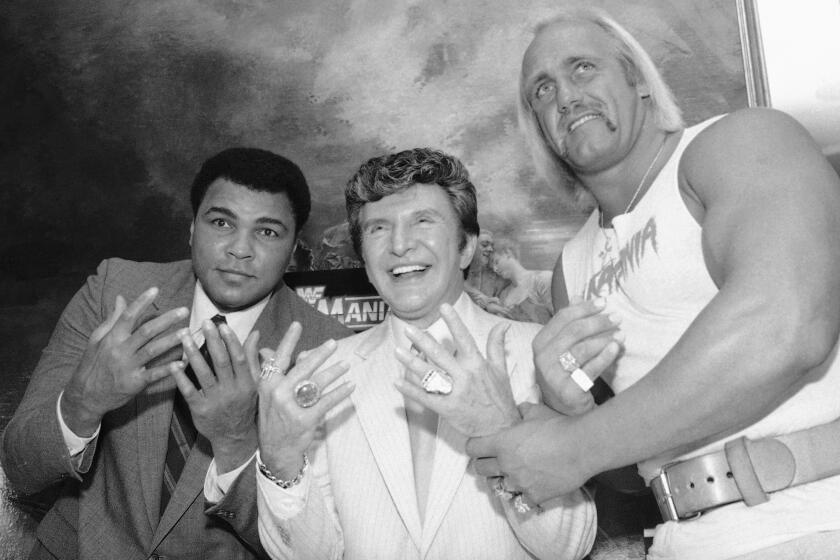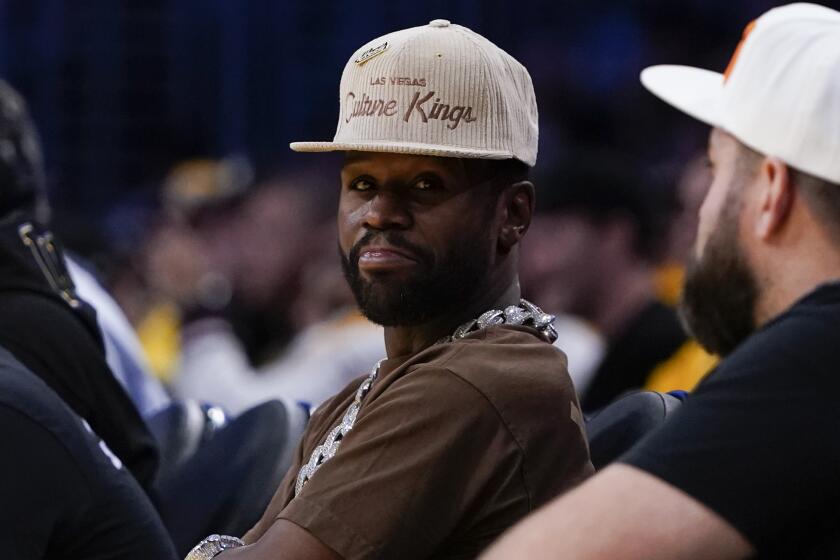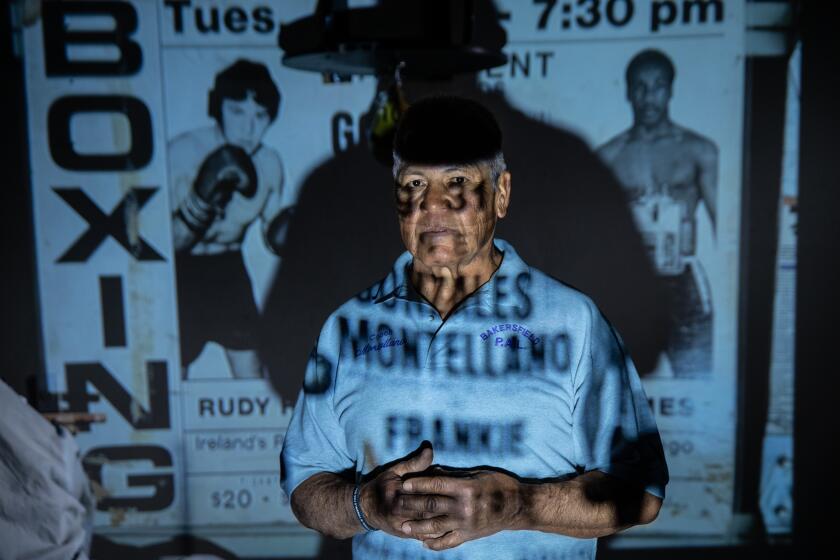Mikey Garcia-Robert Easter fight brings to mind one of the best bouts in boxing history
Stephen Espinoza paused as he read from a script touting Saturday’s fight between Mikey Garcia and Robert Easter at Staples Center.
One fact grabbed the Showtime president’s attention as he spoke to reporters on a conference call:
Garcia-Easter is the first lightweight unification shown by the network since the late Diego Corrales’ 10th-round knockout of Jose Luis Castillo in 2005.
“Big shoes to fill,” Espinoza remarked.
Corrales-Castillo, staged May 7, 2005 at Mandalay Bay in Las Vegas, was called the greatest fight in history by the late boxing scribe Bert Sugar, and is considered a timeless example of heart and skill.
“It was a five-star, quality dissection of the most exquisite technique you’ll ever see,” Corrales trainer Joe Goossen said. “Textbook defense. Combinations were delivered that you’d be hard to ever teach to anyone. It was the prototype.”
With the World Boxing Council and World Boxing Organization belts on the line, Corrales nearly knocked out Castillo during the first half of the bout, but Castillo rallied to close Corrales’ left eye by the end of the seventh.
“I was looking forward to getting two titles. I thought a lot about how great it’d be to be a champion for two organizations,” Castillo told The Times last week by phone from Tijuana.
In the other corner, Goossen said, “We went to work on [Corrales’] eye with a frozen metal device called an ‘end swell’ to push the blood from underneath the eye to the outside. A little bit of maneuvering helped open the eye enough to see.”
Castillo landed a left hook to the head that dropped Corrales early in the 10th, and did so again seconds later as Corrales spit out his mouthpiece to gain a respite, rose on the count of “nine” and accepted a one-point deduction from referee Tony Weeks, visiting Goossen in his corner.
“You gotta [expletive] get inside on him now!” Goossen ordered Corrales.
Goossen said he thought of “what we did in the gym — all the running, the 150 rounds of sparring, the bag work, the legwork — and I had remembered how Alexis Arguello once told me about getting Ruben Olivares down twice and saying, ‘If this guy gets up, I’m done. I have nothing left.’
“Taking that slice, I was thinking Castillo may be thinking the same thing. Diego looked me right in the eyes when I told him to go inside, and damn if he didn’t do it.
“It was this perfect confluence … you wouldn’t believe it if it was in a ‘Rocky’ movie.”
An onslaught of punches wilted and cut Castillo, who was getting pounded against the ropes without answer when Weeks darted in to stop the fight.
“I got overconfident,” Castillo said. “I thought I had him — ‘One more shot is all I need’ — unfortunately, that shot never came from me. It came from him.”
Both men were hospitalized — “Castillo’s body punches were unbelievable. Diego filled a beaker with his urine and it literally looked like tomato juice,” Goossen said — and neither ever won another title fight.
“I said afterward, ‘Whoever seeks out an immediate rematch is sadistic,’” Goossen said, but promoters Bob Arum and Gary Shaw agreed on one that was staged five months later on Oct. 8, 2005.
“I’ve seen guys go through a career and never get hit as hard or often as they did in that fight. It was like driving a car over a cliff, surviving it, and then being asked to do it again a few months later. Diego still had black eyes going into training.
“What I’ve noticed is that the human body has a gas tank to take you through a career, and Castillo and Corrales really stepped on the pedal. After that fight, that tank was empty. It’s more than concussions from punches. It’s the spirit of boxing leaving you.”
Corrales lost the rematch to an overweight Castillo, getting knocked out in the fourth round, and lost his last two fights. Exactly two years after he beat Castillo, on blacktop not far from Mandalay Bay, a distraught Corrales was killed in a motorcycle crash.
“I couldn’t believe it and it took me a long time to accept it,” Castillo said of Corrales’ death. “It really hurt because I’ll never forget that fight and those moments we shared in the ring.”
Goossen surmised, “That was the last bit of effort, of blood, sweat, tears and soul those guys could give. Diego said he was willing to die to win, and both of those guys practically did.”
Castillo, a protégé of Julio Cesar Chavez who first won his lightweight belt in 2000 at the Bicycle Club casino parking lot in Bell Gardens, then engaged in a 2002 bout with Floyd Mayweather Jr. that’s considered the closest Mayweather came to defeat, fought 19 more times after beating Corrales, winning 13.
“We left a lot in the ring,” Castillo said. “I wasn’t hungry anymore. I worked very hard, trained so much to get to the top, and after that, I didn’t. It was hard to tell if it was because of that fight, but my desire wasn’t there. I lost a lot of fights toward the end because I wasn’t into boxing anymore.”
Now a congressman in Sonora, Mexico, Castillo has a son, Jose Jr., who boxes professionally and while he can’t bring himself to watch an entire replay of any of his prior fights, he’ll show his family a few rounds of the Corrales classic.
“I never thought I was anything out of the ordinary; never would’ve paid any money to see myself fight,” Castillo said.
“But it makes me very proud when people talk to me about that fight and say it was the best they’d ever seen. I’ll show my kids and say, That’s your father, in a fight they call one of the best in history.”
Twitter: @latimespugmire
More to Read
Get our high school sports newsletter
Prep Rally is devoted to the SoCal high school sports experience, bringing you scores, stories and a behind-the-scenes look at what makes prep sports so popular.
You may occasionally receive promotional content from the Los Angeles Times.







